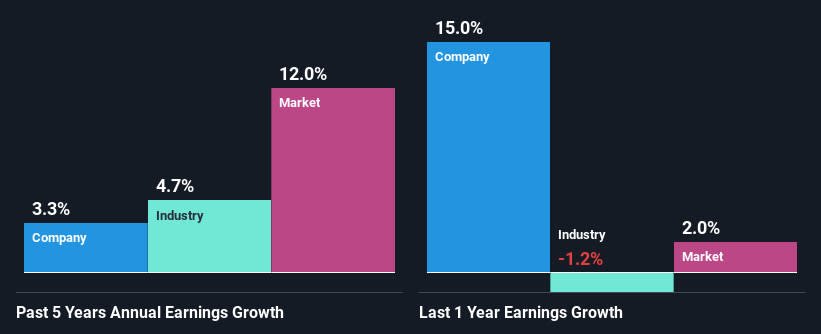With its stock down 6.4% over the past three months, it is easy to disregard James Halstead (LON:JHD). However, stock prices are usually driven by a company’s financials over the long term, which in this case look pretty respectable. Specifically, we decided to study James Halstead’s ROE in this article.
Return on equity or ROE is an important factor to be considered by a shareholder because it tells them how effectively their capital is being reinvested. In simpler terms, it measures the profitability of a company in relation to shareholder’s equity.
See our latest analysis for James Halstead
How Is ROE Calculated?
ROE can be calculated by using the formula:
Return on Equity = Net Profit (from continuing operations) ÷ Shareholders’ Equity
So, based on the above formula, the ROE for James Halstead is:
26% = UK£44m ÷ UK£169m (Based on the trailing twelve months to December 2023).
The ‘return’ is the yearly profit. So, this means that for every £1 of its shareholder’s investments, the company generates a profit of £0.26.
What Has ROE Got To Do With Earnings Growth?
Thus far, we have learned that ROE measures how efficiently a company is generating its profits. We now need to evaluate how much profit the company reinvests or “retains” for future growth which then gives us an idea about the growth potential of the company. Assuming all else is equal, companies that have both a higher return on equity and higher profit retention are usually the ones that have a higher growth rate when compared to companies that don’t have the same features.
A Side By Side comparison of James Halstead’s Earnings Growth And 26% ROE
To begin with, James Halstead has a pretty high ROE which is interesting. Secondly, even when compared to the industry average of 11% the company’s ROE is quite impressive. However, for some reason, the higher returns aren’t reflected in James Halstead’s meagre five year net income growth average of 3.3%. This is interesting as the high returns should mean that the company has the ability to generate high growth but for some reason, it hasn’t been able to do so. We reckon that a low growth, when returns are quite high could be the result of certain circumstances like low earnings retention or or poor allocation of capital.
As a next step, we compared James Halstead’s net income growth with the industry and were disappointed to see that the company’s growth is lower than the industry average growth of 4.7% in the same period.
Earnings growth is an important metric to consider when valuing a stock. What investors need to determine next is if the expected earnings growth, or the lack of it, is already built into the share price. Doing so will help them establish if the stock’s future looks promising or ominous. Is James Halstead fairly valued compared to other companies? These 3 valuation measures might help you decide.
Is James Halstead Making Efficient Use Of Its Profits?
With a high three-year median payout ratio of 81% (or a retention ratio of 19%), most of James Halstead’s profits are being paid to shareholders. This definitely contributes to the low earnings growth seen by the company.
Additionally, James Halstead has paid dividends over a period of at least ten years, which means that the company’s management is determined to pay dividends even if it means little to no earnings growth. Upon studying the latest analysts’ consensus data, we found that the company is expected to keep paying out approximately 86% of its profits over the next three years.
Conclusion
On the whole, we do feel that James Halstead has some positive attributes. However, while the company does have a high ROE, its earnings growth number is quite disappointing. This can be blamed on the fact that it reinvests only a small portion of its profits and pays out the rest as dividends.
Have feedback on this article? Concerned about the content? Get in touch with us directly. Alternatively, email editorial-team (at) simplywallst.com.
This article by Simply Wall St is general in nature. We provide commentary based on historical data and analyst forecasts only using an unbiased methodology and our articles are not intended to be financial advice. It does not constitute a recommendation to buy or sell any stock, and does not take account of your objectives, or your financial situation. We aim to bring you long-term focused analysis driven by fundamental data. Note that our analysis may not factor in the latest price-sensitive company announcements or qualitative material. Simply Wall St has no position in any stocks mentioned.


